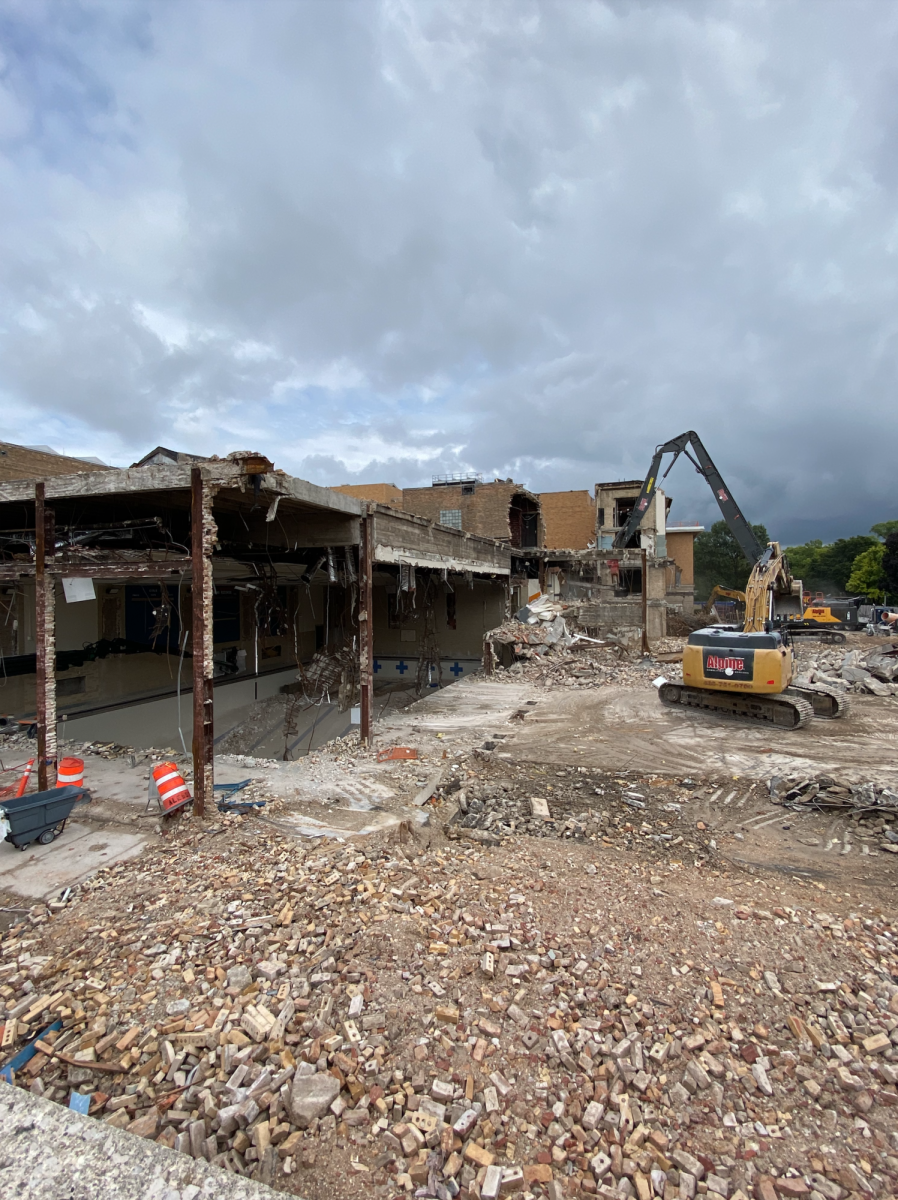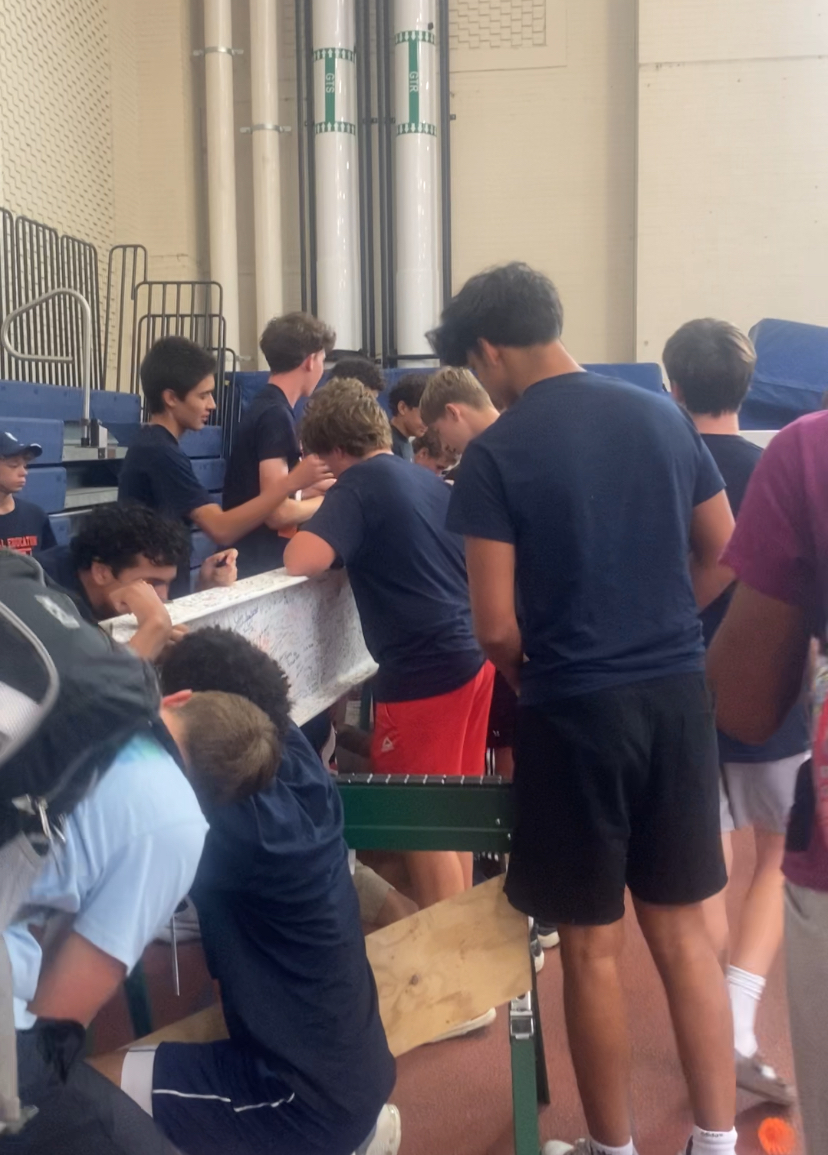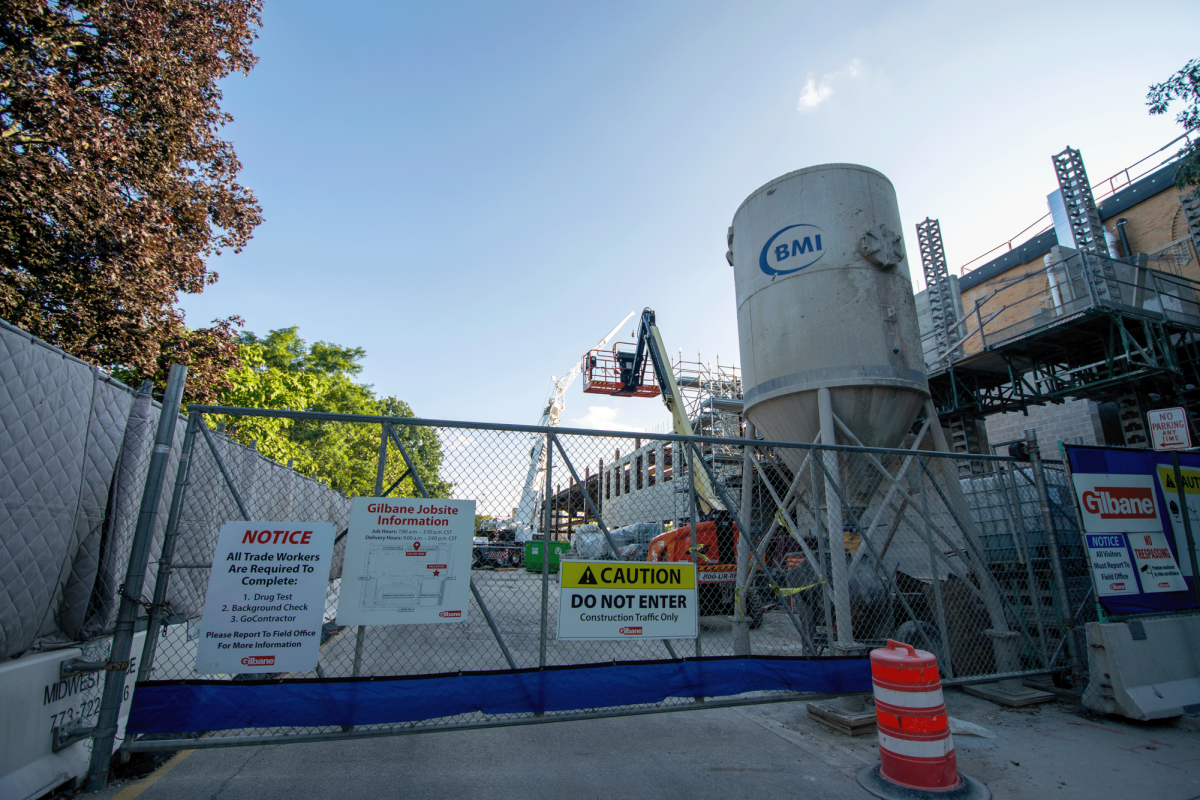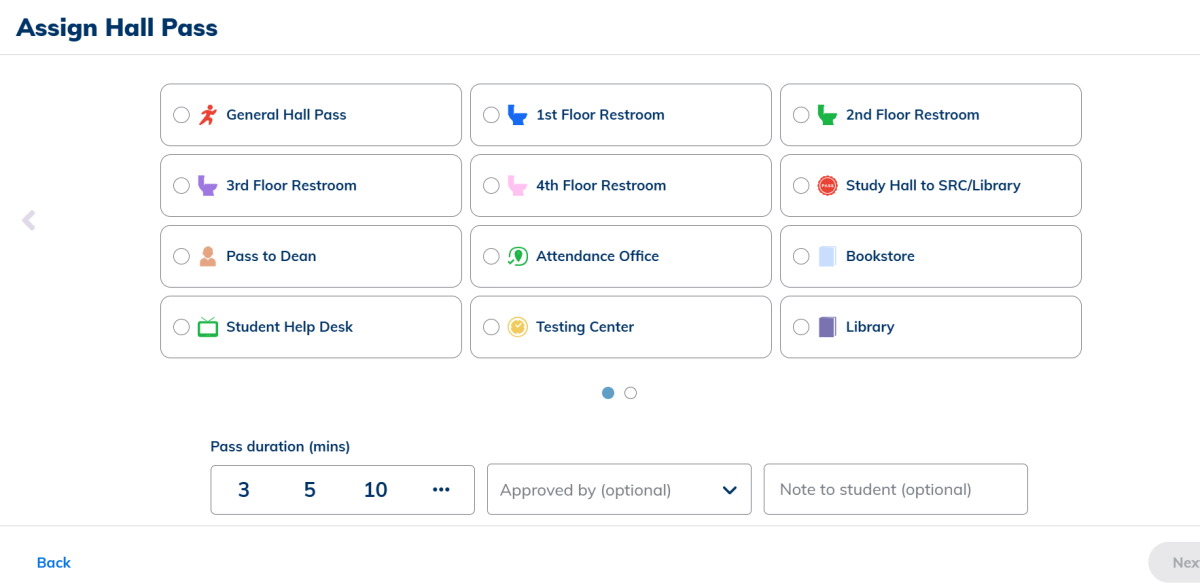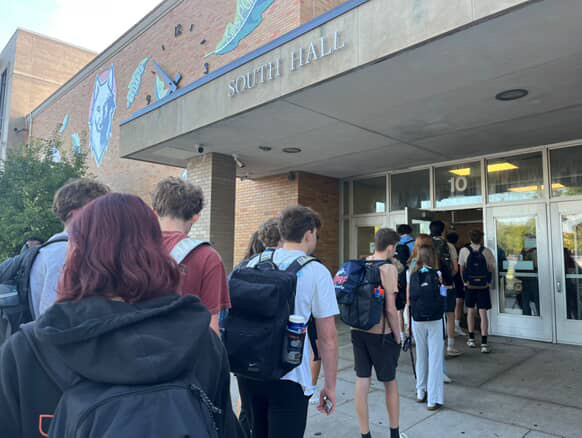Project 2, the formal name for the construction being done on the athletic wing, is underway, which means changes to physical education classes and school sports.
The $102-million project broke ground in June and is expected to be complete by the time school starts in the fall of 2026.
Nicole Ebsen, director of athletics, stated that the cheer and drill teams have been the most impacted by construction so far “just because of where their spaces used to reside.” She also said that when winter comes, even more sports will experience displacement.
Freshman and member of the drill team Anya Sekhar noted that the team is currently practicing in spaces not built for athletics. “We’ve had to be practicing in the cafeteria instead of an actual gym,” she explained.
“There’s very few sports that haven’t been touched one way or another by this project,” said Anthony Arbogast, assistant superintendent for business services.
In addition to finding new spaces for sports and PE, project leaders have also had to consider the wishes of the neighbors who may be affected by the construction. Arbogast stated that, “We are trying to be the best neighbors that we can be, knowing that while they signed up to live across from a school, maybe they didn’t expect this level of construction, which is why we meet with the neighbors on a regular basis.”
The methods used to ease the burden of construction on the neighbors have included spraying down the dust stirred up by construction, monitoring vibration to prevent potential damage to homes and giving residents whose parking space has been affected passes to park in the school’s parking garage, according to Arbogast.
While students, teachers and coaches will experience disruptions during construction, in the end they will have facilities much better suited to their needs, said Ebsen. Ebsen additonally pointed out that students and coaches had input into the designs of the new athletic facilities.
“We did have meetings at the very beginning just to talk about what students looked for, how are facilities compared to those that they’ve competed in at other schools,” she said, adding that students made several requests, including locker room space to store their sports equipment. “It was very student-focused and very coach-driven as far as the decisions that we made,” she said.
One of the key features of the new athletic wing will be a new 25-by-40-foot swimming pool to replace the two current pools, which were built in 1928. Head of Construction Jeff Bergmann said the old pools are “antiquated in design compared to the newer standards that we need, especially for all the high school regulations, as far as holding any kind of tournament. So the pool itself needs to be upgraded to meet those standards.”
“There’s just a plethora of things that we would gain from having the new pool space,” Ebsen added.
Along with the pool, the design for the new athletic wing includes flexible multi-use gyms, a dance or multipurpose gym, a weight room, athletic training space, locker rooms, performing arts dressing rooms and a student commons, among other facilities.
This modernization will not completely erase the antiquities of the space, however. Certain elements of the old design will be preserved and reincorporated into the new facilities.
This includes the statues and tiling from the old pool being used as decorative elements, as well as repurposing certain elements of the old design into something new.
Bergmann gave an example of this, stating, “There’s some wood flooring that we’re saving from the gym floors that will be put back, not as a gym floor, but on a wall behind some of the feature walls.”
The goal now is to complete all of these elements before fall 2026.
Arbogast stated that he believes the most difficult part of the project will be staying on schedule, saying, “The project itself kind of butts up against the start of a school year. So if they fall behind schedule, and then they don’t make that time up, it could impact not the ability to open school, but to have the full school accessible,” he said.
Bergmann also pointed out that the demolition process can create delays. “During the demolition, you sometimes uncover things that you didn’t know were there, and depending on what it is, it can slow down the process, because you have to investigate a little bit more,” he said.
The demolition process was almost over at press time, and Bergmann says that though some unexpected discoveries were made, they didn’t affect the pace of construction.
“There were places where there would be a masonry wall built over a whole hallway… because of the multiple additions that were put onto the building as it was built up in the different years, things that got covered up that we didn’t know were there. So some of it was interesting and surprising, but it didn’t slow us down.”

